STRUCTURE OF THE CORRELLIAN NATIVIST TRADITION
The Correllian Nativist Tradition is founded upon the teachings of the High-Correll family. We are dedicated to fostering communication and co-operation between Pagan peoples everywhere, and to improving and securing the status and legal rights of the Pagan peoples.
The teachings of the Correllian Tradition derive from the Blv. Orpheis Caroline High Correll, an American woman of mixed racial and cultural descent, who taught that Pagan peoples around the world could only survive through united action against religious/cultural imperialism.
There follows a discussion of the structure and current leadership of the Correllian Nativist Tradition. To learn more about degrees of initiatory and non-initiatory membership, go HERE.
The Correllian Nativist Tradition is founded upon the teachings of the High-Correll family. We are dedicated to fostering communication and co-operation between Pagan peoples everywhere, and to improving and securing the status and legal rights of the Pagan peoples.
The teachings of the Correllian Tradition derive from the Blv. Orpheis Caroline High Correll, an American woman of mixed racial and cultural descent, who taught that Pagan peoples around the world could only survive through united action against religious/cultural imperialism.
There follows a discussion of the structure and current leadership of the Correllian Nativist Tradition. To learn more about degrees of initiatory and non-initiatory membership, go HERE.
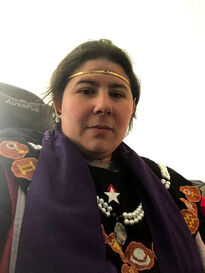
FIRST PRIESTESS
The First Priestess and First Priest traditionally act as Joint Heads of the Correllian Tradition, forming a diarchy. The First Priestess is the Matriarchal Joint-Head of the Tradition. In this capacity the First Priestess is responsible for maintaining the sanctity of the Correllian Tradition and its connection with the Ancestors and the Divine. The initiation of all Priesthood, Temples and Orders ultimately derive authority from this sanctity, and thus from the First Priestess. Responsible for adding teachings ensuring continual spiritual grow. The First Priestess also acts as chairperson for the Correllian Council of Elders. (Right: M. Rev. Alyssa Maxon Kemp)
The current First Priestess of the Tradition is M. Rev. Alyssa Maxon Kemp, who was hallowed in office in Year 23 Aq. First Priestess M. Rev. Krystel High-Correll, was hallowed in office in 1579 Pi.(1979 CE) and is currently Retired in Office.
Previous First Priestesses of the Correllian Tradition include Blv. Orpheis Caroline High Correll, Blv. Mable High Correll, and Blv. Rev. LaVeda Lewis-Highcorrell.
The First Priestess and First Priest traditionally act as Joint Heads of the Correllian Tradition, forming a diarchy. The First Priestess is the Matriarchal Joint-Head of the Tradition. In this capacity the First Priestess is responsible for maintaining the sanctity of the Correllian Tradition and its connection with the Ancestors and the Divine. The initiation of all Priesthood, Temples and Orders ultimately derive authority from this sanctity, and thus from the First Priestess. Responsible for adding teachings ensuring continual spiritual grow. The First Priestess also acts as chairperson for the Correllian Council of Elders. (Right: M. Rev. Alyssa Maxon Kemp)
The current First Priestess of the Tradition is M. Rev. Alyssa Maxon Kemp, who was hallowed in office in Year 23 Aq. First Priestess M. Rev. Krystel High-Correll, was hallowed in office in 1579 Pi.(1979 CE) and is currently Retired in Office.
Previous First Priestesses of the Correllian Tradition include Blv. Orpheis Caroline High Correll, Blv. Mable High Correll, and Blv. Rev. LaVeda Lewis-Highcorrell.

FIRST PRIEST
The First Priest is the Fraternal Joint-Head of the Tradition. In the past the First Priest was normally either the brother or son of the First Priestess. The First Priest is responsible for co-ordinating relations between Correllian Temples, and acts as chairperson for the Witan Council when it shall be invoked. The First Priest is responsible for the Tradition’s relations with other Wiccan and Pagan Traditions. The First Priest is also responsible for maintaining the Tradition’s history and internal records, and its publications. (Right: M. Rev. Phoenix Coffin-Williams)
The current First Priest of the Correllian Tradition is M. Rev. Phoenix Coffin-Williams, having been thus acclaimed and hallowed in office in year 23 Aquarius (2023 CE). M. Rev. Donald Lewis High-Correll was hallowed in office in 1579 Pi.(1979 CE) and is currently Retired in Office.
Previous First Priests of the Correllian Tradition include Blv. William High, Blv. Frank High Correll, and Blv. William High Correll.
The First Priest is the Fraternal Joint-Head of the Tradition. In the past the First Priest was normally either the brother or son of the First Priestess. The First Priest is responsible for co-ordinating relations between Correllian Temples, and acts as chairperson for the Witan Council when it shall be invoked. The First Priest is responsible for the Tradition’s relations with other Wiccan and Pagan Traditions. The First Priest is also responsible for maintaining the Tradition’s history and internal records, and its publications. (Right: M. Rev. Phoenix Coffin-Williams)
The current First Priest of the Correllian Tradition is M. Rev. Phoenix Coffin-Williams, having been thus acclaimed and hallowed in office in year 23 Aquarius (2023 CE). M. Rev. Donald Lewis High-Correll was hallowed in office in 1579 Pi.(1979 CE) and is currently Retired in Office.
Previous First Priests of the Correllian Tradition include Blv. William High, Blv. Frank High Correll, and Blv. William High Correll.
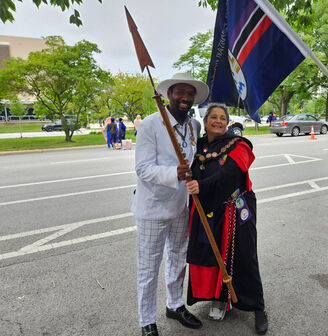
FIRST ELDER
The First Elder of the Tradition is the principle advisor to the Tradition Heads, and to the Tradition as a whole. The First Elder is chosen by the Tradition Heads and is the Philosopher Laureate of the Correllian Tradition. The First Elder is also responsible for overseeing the succession to the offices of the Tradition leadership.
The current First Elder of the Correllian Tradition is Rt. Rev.Lori Blackman, who was so acclaimed on Year 23 Aq.
Previous First Elders of the Correllian Tradition include Blv. Frank High Correll, Blv. Rev. Gloria High Correll, Blv. Virginia "Bitterwind" Smith, Rt. Rev. Ser Ed Correll, Blv. Windy Lajoie, and M. Rev. Alyssa Maxon Kemp.
The First Elder of the Tradition is the principle advisor to the Tradition Heads, and to the Tradition as a whole. The First Elder is chosen by the Tradition Heads and is the Philosopher Laureate of the Correllian Tradition. The First Elder is also responsible for overseeing the succession to the offices of the Tradition leadership.
The current First Elder of the Correllian Tradition is Rt. Rev.Lori Blackman, who was so acclaimed on Year 23 Aq.
Previous First Elders of the Correllian Tradition include Blv. Frank High Correll, Blv. Rev. Gloria High Correll, Blv. Virginia "Bitterwind" Smith, Rt. Rev. Ser Ed Correll, Blv. Windy Lajoie, and M. Rev. Alyssa Maxon Kemp.
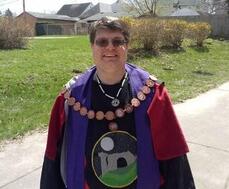
FIRST DIRECTOR
The First Director is responsible for maintaining the Tradition’s legal standing and records and co-ordinating relations between the various Chief Directors of Temples. The first Director is also responsible for representing the Tradition to the non-Pagan world, and for co-ordinating ecumenical outreach, as well as public relations and publicity.
The office of First Director was created out of the traditional duties of the First Priest, and was established as a permanent office of the Tradition in 1591 Pisces (1991 CE).
The current First Director of the Correllian Tradition is Rt. Rev. Ser Jason Highcorrell, having been thus appointed on 29 April, Year 13 Aquarius (2013 CE).
Previous First Directors include Rt. Rev. Ser Edward High Correll.
The First Director is responsible for maintaining the Tradition’s legal standing and records and co-ordinating relations between the various Chief Directors of Temples. The first Director is also responsible for representing the Tradition to the non-Pagan world, and for co-ordinating ecumenical outreach, as well as public relations and publicity.
The office of First Director was created out of the traditional duties of the First Priest, and was established as a permanent office of the Tradition in 1591 Pisces (1991 CE).
The current First Director of the Correllian Tradition is Rt. Rev. Ser Jason Highcorrell, having been thus appointed on 29 April, Year 13 Aquarius (2013 CE).
Previous First Directors include Rt. Rev. Ser Edward High Correll.
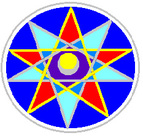
COUNCIL OF ELDERS
The Correllian Council of Elders (CCE) is an advisory body made up of the Officers of the Correllian Tradition as listed above, as well as other members chosen from amongst the Arch Priesthood and named as Elders. The Council of Elders might be described as the “cabinet” of the Tradition, being a council whose non-binding opinion is solicited to help shape Tradition-wide policy. The Correllian Council of Elders may be convened at the discretion of either of Joint Heads of Tradition, but is chaired by the First Elder.
The principle purpose of the Correllian Council of Elders, besides advising on matters of Tradition-wide policy, is to oversee the succession to the offices of the Joint Heads of Tradition.
Current members of the Correllian Council of Elders include: Rt. Rev. Lori Blackman, Rt. Rev. Ser Jason M. Highcorrell, Rt. Rev. Anna Rowe (England), Rt. Rev. Raene Packery (South Africa), and Rt. Rev. Ser Angela Munn.
The Correllian Council of Elders (CCE) is an advisory body made up of the Officers of the Correllian Tradition as listed above, as well as other members chosen from amongst the Arch Priesthood and named as Elders. The Council of Elders might be described as the “cabinet” of the Tradition, being a council whose non-binding opinion is solicited to help shape Tradition-wide policy. The Correllian Council of Elders may be convened at the discretion of either of Joint Heads of Tradition, but is chaired by the First Elder.
The principle purpose of the Correllian Council of Elders, besides advising on matters of Tradition-wide policy, is to oversee the succession to the offices of the Joint Heads of Tradition.
Current members of the Correllian Council of Elders include: Rt. Rev. Lori Blackman, Rt. Rev. Ser Jason M. Highcorrell, Rt. Rev. Anna Rowe (England), Rt. Rev. Raene Packery (South Africa), and Rt. Rev. Ser Angela Munn.

HERALD OF THE WITAN
The Witan Herald is responsible for registering and co-ordinating all of the Traditions Temples and groups. The Witan Herald facilitates communication between the groups and maintains records of all groups present and past. The office of Witan Herald was established in Year 5 Aquarius (2005 AD)
The present Witan Herald is Rt. Rev. Anna Rowe. Previous Witan Heralds have included Rt. Rev. Ser Jason M. Highcorrell, and Rev. Kent Heilen.
The Witan Herald is responsible for registering and co-ordinating all of the Traditions Temples and groups. The Witan Herald facilitates communication between the groups and maintains records of all groups present and past. The office of Witan Herald was established in Year 5 Aquarius (2005 AD)
The present Witan Herald is Rt. Rev. Anna Rowe. Previous Witan Heralds have included Rt. Rev. Ser Jason M. Highcorrell, and Rev. Kent Heilen.

WITAN COUNCIL
The Witan Council is made up of the Heads of all Correllian Temples, members of the Correllian Council of Elders, and the Officers and Heads of the Correllian Tradition. Among Temple Heads, only fully seated Temple Heads may be considered members of the Witan Council, though Acting Temple Heads may attend and address the Council. In addition the Council may also contain 'Notable Members of the Tradition' who do not fit into the above-named categories but have been appointed as such at the discretion of the First Priesthood.
The Witan Council is an advisory body which may be convened as needed to advise on matters of Tradition policy. However, the principle duty of the Witan Council is to confirm the succession to the offices of First Priestess and First Priest.
To learn more about the Witan Council, go HERE
The Witan Council is made up of the Heads of all Correllian Temples, members of the Correllian Council of Elders, and the Officers and Heads of the Correllian Tradition. Among Temple Heads, only fully seated Temple Heads may be considered members of the Witan Council, though Acting Temple Heads may attend and address the Council. In addition the Council may also contain 'Notable Members of the Tradition' who do not fit into the above-named categories but have been appointed as such at the discretion of the First Priesthood.
The Witan Council is an advisory body which may be convened as needed to advise on matters of Tradition policy. However, the principle duty of the Witan Council is to confirm the succession to the offices of First Priestess and First Priest.
To learn more about the Witan Council, go HERE
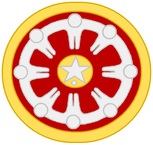
TEMPLES
Correllian Temples are established by charter, which may only be granted by the Heads of the Correllian Tradition. Though any Temple may include Correllian ideas or even Correllian clergy, only a Temple chartered by the Correllian Tradition can be considered a true Correllian Temple.
Customarily Correllian Temples are established under a chartered Temple Head and a Board of Directors. The Head of Temple is responsible for the day to day running of the Temple. The Temple’s Chief Director, who may or may not be the same person as the Temple Head, is responsible to the Correllian Tradition for all required legal paperwork.
Temple Heads are established by charter. The first Head of a given Temple is considered the Founding Head of Temple. Subsequent Heads of Temple may be nominated by their predecessor or by the Temple’s Board of Directors, but must be recognized by charter of the Tradition before being considered to be fully seated. Moreover, to be fully seated a Head of Temple must be a member of the High Priesthood, or Third Degree of Clergy.
Temple Heads may be chartered from outside the High Priesthood at the discretion of the First Priesthood, but are considered to be Acting Temple Heads under the imperium of a Third Degree Sponsor until such time as they themselves achieve the status Third Degree Priesthood, when they can be considered fully seated. When an Acting Temple Head achieves Third Degree status all initiations which they have performed in the pursuance of their office shall be considered part of their lineage. If an Acting Temple Head never achieves Third Degree status, initiations they have performed shall trace through the lineage of their Sponsor.
All fully seated Heads of Correllian Temples have a seat on the Witan Council, hence the name. Acting Heads of Temple may attend and address meetings of the Witan, but do not have a vote on the Council until they are fully seated.
Correllian Temples are expected to conform to the basic tenets of Correllianism, but are given great leeway in the actual running of the Temple.
For information on how to start a Correllian Temple contact the Witan Herald at [email protected]
For a list of current Temples, go HERE.
Correllian Temples are established by charter, which may only be granted by the Heads of the Correllian Tradition. Though any Temple may include Correllian ideas or even Correllian clergy, only a Temple chartered by the Correllian Tradition can be considered a true Correllian Temple.
Customarily Correllian Temples are established under a chartered Temple Head and a Board of Directors. The Head of Temple is responsible for the day to day running of the Temple. The Temple’s Chief Director, who may or may not be the same person as the Temple Head, is responsible to the Correllian Tradition for all required legal paperwork.
Temple Heads are established by charter. The first Head of a given Temple is considered the Founding Head of Temple. Subsequent Heads of Temple may be nominated by their predecessor or by the Temple’s Board of Directors, but must be recognized by charter of the Tradition before being considered to be fully seated. Moreover, to be fully seated a Head of Temple must be a member of the High Priesthood, or Third Degree of Clergy.
Temple Heads may be chartered from outside the High Priesthood at the discretion of the First Priesthood, but are considered to be Acting Temple Heads under the imperium of a Third Degree Sponsor until such time as they themselves achieve the status Third Degree Priesthood, when they can be considered fully seated. When an Acting Temple Head achieves Third Degree status all initiations which they have performed in the pursuance of their office shall be considered part of their lineage. If an Acting Temple Head never achieves Third Degree status, initiations they have performed shall trace through the lineage of their Sponsor.
All fully seated Heads of Correllian Temples have a seat on the Witan Council, hence the name. Acting Heads of Temple may attend and address meetings of the Witan, but do not have a vote on the Council until they are fully seated.
Correllian Temples are expected to conform to the basic tenets of Correllianism, but are given great leeway in the actual running of the Temple.
For information on how to start a Correllian Temple contact the Witan Herald at [email protected]
For a list of current Temples, go HERE.
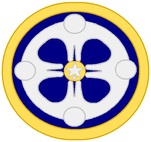
Proto-Temples
A Proto-Temple is founded in the expectation of going on to become a full Temple.
When a Proto-Temple receives its charter as a Temple, the Keeper becomes recognized as the seated Head of Temple. If however the Keeper is below Third Degree when the Temple is chartered and is acting under the imperium of a Third Degree sponsor then the Keeper shall be recognized as Acting Head of Temple under their sponsor's imperium until they have themselves attained the Third Degree, at which time they shall be fully seated on the Witan.
For information on how to start a Correllian Proto-Temple contact the Witan Herald at [email protected]
For a list of current Proto-Temples, go HERE.
A Proto-Temple is founded in the expectation of going on to become a full Temple.
When a Proto-Temple receives its charter as a Temple, the Keeper becomes recognized as the seated Head of Temple. If however the Keeper is below Third Degree when the Temple is chartered and is acting under the imperium of a Third Degree sponsor then the Keeper shall be recognized as Acting Head of Temple under their sponsor's imperium until they have themselves attained the Third Degree, at which time they shall be fully seated on the Witan.
For information on how to start a Correllian Proto-Temple contact the Witan Herald at [email protected]
For a list of current Proto-Temples, go HERE.
SHRINES
In Correllian parlance a Shrine is a place of worship similar to but less formal than a Temple. Whereas a Temple must be headed by a Third Degree Cleric, or under the direct imperium of a Third Degree Cleric, a Shrine may be headed by a person of any Degree.
Sometimes a Shrine is formed as a less formal alternative to a Temple. Other times a Shrine may be formed to fulfill a specific function -as an annual ritual, social event, ministerial or charitable activity.
The Correllian Tradition recognizes three kinds of Shrine:
A Witan Shrine is founded in the expectation of going on to become a Proto-Temple.
A Formal Shrine is a Shrine which has been established to perform a specific duty, often of a charitable nature.
A Personal Shrine is a personal expression of the Shrine Keeper's spirituality and may be undertaken by any Tradition member.
All three kinds of Shrine are described in greater detail below.
In Correllian parlance a Shrine is a place of worship similar to but less formal than a Temple. Whereas a Temple must be headed by a Third Degree Cleric, or under the direct imperium of a Third Degree Cleric, a Shrine may be headed by a person of any Degree.
Sometimes a Shrine is formed as a less formal alternative to a Temple. Other times a Shrine may be formed to fulfill a specific function -as an annual ritual, social event, ministerial or charitable activity.
The Correllian Tradition recognizes three kinds of Shrine:
A Witan Shrine is founded in the expectation of going on to become a Proto-Temple.
A Formal Shrine is a Shrine which has been established to perform a specific duty, often of a charitable nature.
A Personal Shrine is a personal expression of the Shrine Keeper's spirituality and may be undertaken by any Tradition member.
All three kinds of Shrine are described in greater detail below.

WITAN SHRINES
The most formal Shrines in the Tradition are Witan Shrines! A Witan Shrine is a Shrine founded in expectation of its later becoming a Proto- Temple: At this time all new Correllian Temples must spend at least one year as a Witan Shrine prior to being officially chartered as Temples of the Tradition.
A Witan Shrine functions in the same manner as a Shrine, described above, with the difference of its being considered a formal body of the Tradition rather than a private function of the Shrine Keeper, and it’s focused toward developing the functions of a Temple.
The Keeper of a Witan Shrine must be a member of the Third Degree High Priesthood, or a person studying toward Third Degree and under the imperium of a Third Degree sponsor approved by the Council of Elders.
Unlike ordinary and Formal Shrines a Witan Shrine is considered a formal body of the Tradition. A Witan Shrine Keeper is not regarded as having a seat on the Witan Council, and hence has no vote in the Council, but may attend and participate in the Council on the same basis as Acting Heads of Temples.
For information on how to start a Correllian Witan Shrine, and for an application form, contact the Witan Herald at witanherald@gmail.com
For a list of current Witan Shrines, go HERE.
The most formal Shrines in the Tradition are Witan Shrines! A Witan Shrine is a Shrine founded in expectation of its later becoming a Proto- Temple: At this time all new Correllian Temples must spend at least one year as a Witan Shrine prior to being officially chartered as Temples of the Tradition.
A Witan Shrine functions in the same manner as a Shrine, described above, with the difference of its being considered a formal body of the Tradition rather than a private function of the Shrine Keeper, and it’s focused toward developing the functions of a Temple.
The Keeper of a Witan Shrine must be a member of the Third Degree High Priesthood, or a person studying toward Third Degree and under the imperium of a Third Degree sponsor approved by the Council of Elders.
Unlike ordinary and Formal Shrines a Witan Shrine is considered a formal body of the Tradition. A Witan Shrine Keeper is not regarded as having a seat on the Witan Council, and hence has no vote in the Council, but may attend and participate in the Council on the same basis as Acting Heads of Temples.
For information on how to start a Correllian Witan Shrine, and for an application form, contact the Witan Herald at witanherald@gmail.com
For a list of current Witan Shrines, go HERE.

FORMAL SHRINES
In addition to the Witan Shrines described above, the Correllian Tradition also includes Formal Shrines.
A Formal Shrine is basically the same as a Personal Shrine: a private worship center maintained by an individual Correllian Tradition member of Inner Court. The difference is that a Formal Shrine is dedicated to a specific project, event, or program of a social or charitable nature which the Tradition endorses.
A Formal Shrine is created by Charter rather than recognition.
To be chartered as a Formal Shrine a Shrine must be associated with a charitable activity or ministerial outreach project of some sort, beyond the celebration of worship.
Despite this a Formal Shrine, like an ordinary Shrine, has no representation on the Witan Council as it remains essentially a venture of its Shrine Keeper rather than of the Tradition as such.
For information on how to start a Correllian Formal Shrine, and for an application form, contact the Witan Herald at [email protected]
For a list of current Formal Shrines, go HERE.
In addition to the Witan Shrines described above, the Correllian Tradition also includes Formal Shrines.
A Formal Shrine is basically the same as a Personal Shrine: a private worship center maintained by an individual Correllian Tradition member of Inner Court. The difference is that a Formal Shrine is dedicated to a specific project, event, or program of a social or charitable nature which the Tradition endorses.
A Formal Shrine is created by Charter rather than recognition.
To be chartered as a Formal Shrine a Shrine must be associated with a charitable activity or ministerial outreach project of some sort, beyond the celebration of worship.
Despite this a Formal Shrine, like an ordinary Shrine, has no representation on the Witan Council as it remains essentially a venture of its Shrine Keeper rather than of the Tradition as such.
For information on how to start a Correllian Formal Shrine, and for an application form, contact the Witan Herald at [email protected]
For a list of current Formal Shrines, go HERE.

PERSONAL SHRINES
To be an official Correllian Shrine, a Personal Shrine must be recognized by the Tradition. A Personal Shrine is given official existence through Recognition rather than Chartering. Recognition may be obtained through application to the First Priesthood.
Though a Personal Shrine may be recognized by the Tradition, it is not an official body of the Tradition, but rather the private project of a Tradition member.
Any Correllian may act as a Shrine Keeper, because of the informal nature of a Personal Shrine vs a Temple. A Keeper may be a Cleric of any Degree, or even an Outer Court Member, since a Personal Shrine performs no official ceremonies. However for the same reason a Shrine -no matter what the Degree of the Keeper- has no representation on the Witan Council.
For information and application form on how to start a Correllian Personal Shrine contact the Witan Herald at [email protected]
For information on how to start a Correllian Personal Shrine, and for an application form, contact the Witan Herald at [email protected]
For a list of current Personal Shrines, go HERE.
To be an official Correllian Shrine, a Personal Shrine must be recognized by the Tradition. A Personal Shrine is given official existence through Recognition rather than Chartering. Recognition may be obtained through application to the First Priesthood.
Though a Personal Shrine may be recognized by the Tradition, it is not an official body of the Tradition, but rather the private project of a Tradition member.
Any Correllian may act as a Shrine Keeper, because of the informal nature of a Personal Shrine vs a Temple. A Keeper may be a Cleric of any Degree, or even an Outer Court Member, since a Personal Shrine performs no official ceremonies. However for the same reason a Shrine -no matter what the Degree of the Keeper- has no representation on the Witan Council.
For information and application form on how to start a Correllian Personal Shrine contact the Witan Herald at [email protected]
For information on how to start a Correllian Personal Shrine, and for an application form, contact the Witan Herald at [email protected]
For a list of current Personal Shrines, go HERE.

ORDERS
An Order is an association dedicated to the study or practice of a particular subject, such as ecology, healing, music, etc.
Although regarded as an independent body, an Order is formed by a Charter from the Tradition, which may only be granted by the Heads of Tradition. An Order may be formed around any subject of interest.
An Order commonly has a single Head who is responsible for organizing and facilitating it, who is called an Order Head. The Order Head is also established by Charter from the Tradition. The Order Head may be of any Degree appropriate to the Order’s subject, as defined by the Tradition.
For more information on how to start a Correllian Order, or for an application form, contact the Witan Herald at [email protected]
For a list of current Orders, go HERE.
An Order is an association dedicated to the study or practice of a particular subject, such as ecology, healing, music, etc.
Although regarded as an independent body, an Order is formed by a Charter from the Tradition, which may only be granted by the Heads of Tradition. An Order may be formed around any subject of interest.
An Order commonly has a single Head who is responsible for organizing and facilitating it, who is called an Order Head. The Order Head is also established by Charter from the Tradition. The Order Head may be of any Degree appropriate to the Order’s subject, as defined by the Tradition.
For more information on how to start a Correllian Order, or for an application form, contact the Witan Herald at [email protected]
For a list of current Orders, go HERE.
MERITORIOUS ORDERS
The Correllian Tradition also includes three Meritorious Orders: The Order of Orpheus, The Order of The Round Table, and the Order of Selu.
Membership in the Meritorious Orders is given to honor people who have distinguished themselves by exceptional acts of service to the Tradition, to Paganism as a whole, or to the world. Members of the Meritorious Orders sometimes use the style 'Ser'.
In addition to the above Orders which are awarded only rarely and in recognition of extreme accomplishments, we have also established the following Meritorious Orders which are awarded twice yearly at the Lustrations, to recognize the work and achievements which keep our Tradition running on a daily basis.
To learn more about these Orders, go HERE.
The Correllian Tradition also includes three Meritorious Orders: The Order of Orpheus, The Order of The Round Table, and the Order of Selu.
Membership in the Meritorious Orders is given to honor people who have distinguished themselves by exceptional acts of service to the Tradition, to Paganism as a whole, or to the world. Members of the Meritorious Orders sometimes use the style 'Ser'.
In addition to the above Orders which are awarded only rarely and in recognition of extreme accomplishments, we have also established the following Meritorious Orders which are awarded twice yearly at the Lustrations, to recognize the work and achievements which keep our Tradition running on a daily basis.
To learn more about these Orders, go HERE.
CONTEMPLATIVES
The Correllian Tradition strongly favors the development of Contemplative orders focused on meditation and self-development. These orders may be based upon temporary or longer-term retirement from the mundane world. We believe it is important for people to be able to get away from the pressures of the world for spiritual retreat and re-creation. We feel that an ideal period for such spiritual retreat for most people would be from a few days to a few weeks.
To this end we desire to found one or more Contemplative Houses to provide for this need. These Contemplative Houses would be available to members of the Correllian Tradition for spiritual retreats whenever needed. In addition they could sponsor classes and workshops for Tradition members as well as the general public.
There were several unsuccessful attempts to turn Greenwood House, the former site of the High-Correll covenstead, into such a Retreat.
The Victoria Carlson House of Contemplation, established 4 September, Year 4 Aquarius, located at 112 W. Main St. Hoopeston, Illinois, USA, in the upstairs portion of the Gray Elephant Building. This House of Contemplation was closed in Year 7 Aquarius.
The Correllian Tradition strongly favors the development of Contemplative orders focused on meditation and self-development. These orders may be based upon temporary or longer-term retirement from the mundane world. We believe it is important for people to be able to get away from the pressures of the world for spiritual retreat and re-creation. We feel that an ideal period for such spiritual retreat for most people would be from a few days to a few weeks.
To this end we desire to found one or more Contemplative Houses to provide for this need. These Contemplative Houses would be available to members of the Correllian Tradition for spiritual retreats whenever needed. In addition they could sponsor classes and workshops for Tradition members as well as the general public.
There were several unsuccessful attempts to turn Greenwood House, the former site of the High-Correll covenstead, into such a Retreat.
The Victoria Carlson House of Contemplation, established 4 September, Year 4 Aquarius, located at 112 W. Main St. Hoopeston, Illinois, USA, in the upstairs portion of the Gray Elephant Building. This House of Contemplation was closed in Year 7 Aquarius.
Correllian Groups
There are a number of Facebook Pages that members of the Tradition can join.
There are a number of Facebook Pages that members of the Tradition can join.
